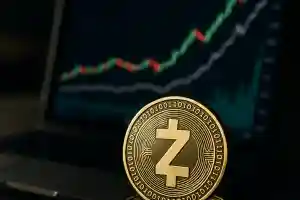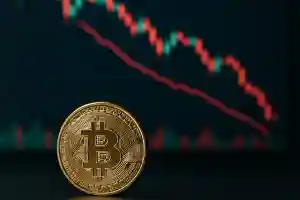Cardano User Loses $6.5 Million in Costly Stablecoin Swap Mishap
 17 Nov 25
17 Nov 25
Cardano Investor Faces Multi-Million Dollar Loss in Stablecoin Swap
A Cardano user has incurred a loss exceeding $6.5 million after attempting to trade USD Coin (USDC) for USDT on a decentralized exchange. The incident underscores ongoing risks associated with low-liquidity digital assets and the importance of due diligence when utilizing decentralized finance (DeFi) platforms.
The Costly Swap: What Went Wrong
On June 13, a user attempted to exchange 1.6 million USDC for USDT using the Cardano-based decentralized exchange Minswap. However, due to severe slippage and thin liquidity in the platform’s USDT/USDC liquidity pool, the trader received only about $5.7 worth of USDT—rather than a value equivalent to the $1.6 million sent. Data from blockchain explorer TapTools and DeFi analytics firm DeFiLlama confirmed the enormous discrepancy and the near total loss of funds.
Understanding Slippage and Low-Liquidity Risks
Slippage refers to the difference between the expected price of a trade and the actual executed price. In decentralized exchanges, if the liquidity pool for a particular token pair is shallow, large trades can cause significant slippage, leading to disastrous outcomes for traders. In this case, the USDT/USDC pool on Cardano's Minswap reportedly held only about $173,000 of each stablecoin, a fraction of the attempted trade amount.
When the user initiated the swap, the entire available USDT in the pool was removed, leaving almost nothing to receive in the swap. The rest of the user’s funds were absorbed by the price impact, effectively leaving them with only pocket change in USDT after spending a fortune in USDC.
Community Reaction and Exchange Response
The sizable loss alarmed the Cardano and DeFi communities. Minswap responded via their Discord channel, confirming that the exchange itself had experienced no breach or exploit. They attributed the disastrous result purely to the lack of liquidity and the subsequent dramatic price impact from the large transaction. Minswap’s team clarified that their smart contract functioned as intended, executing trades at prevailing on-chain prices with no additional checks for outsized slippage resulting from order size.
Calls for Enhanced User Warnings and Protections
The event has renewed calls for decentralized exchanges to implement stronger warning mechanisms for users attempting high-impact trades. While many exchanges offer the ability to set a maximum acceptable slippage percentage, some platforms either leave this unchecked by default or allow trades to execute regardless of price impact.
DeFi security experts and observers argue that exchanges should adopt stricter safeguards to alert users of extreme price movements before allowing potentially ruinous transactions. Enhanced educational efforts about the nuances and risks unique to decentralized trading have also been advocated.
Implications for Decentralized Finance
Lack of Centralized Protections
This Cardano incident highlights the freedom and concurrent risk present in DeFi, where users control their own assets without intermediaries or custodians but remain exposed to technical missteps. Unlike centralized crypto exchanges, which often provide automated checks and protection for retail users, DeFi platforms typically operate without such intervention.
Ongoing Need for Caution
Market analysts have stressed the importance of verifying pool liquidity, setting proper slippage limits, and understanding the mechanics of automated market maker (AMM) platforms before executing high-value trades. Particularly when interacting with relatively new or lightly trafficked blockchains such as Cardano, users are advised to test transactions in small amounts and carefully review all transaction details in connected wallets.
Stablecoins on Cardano: A Developing Ecosystem
Unlike Ethereum, where stablecoins such as USDC and USDT enjoy widespread adoption and ample liquidity, Cardano’s stablecoin ecosystem remains in a nascent stage. The relatively modest liquidity on Cardano-based exchanges can result in market inefficiencies, posing increased risks for large transactions like the one involved in this recent loss.
Lessons Learned and Moving Forward
This $6.5 million blunder serves as a cautionary tale for cryptocurrency enthusiasts regarding the unique risks inherent to decentralized trading protocols. It underscores the necessity for users to exercise vigilance, for platform developers to improve user interface warnings, and for the community to foster greater awareness about the technical limitations of DeFi infrastructure—particularly where deep liquid markets are not yet established.
As Cardano and similar networks continue to expand their DeFi offerings, participants should remain acutely aware of liquidity constraints, technological nuances, and the absence of centralized safety nets. The incident may serve as a catalyst for both developers and users to prioritize risk management, before entering large or complex trades on decentralized platforms.



















